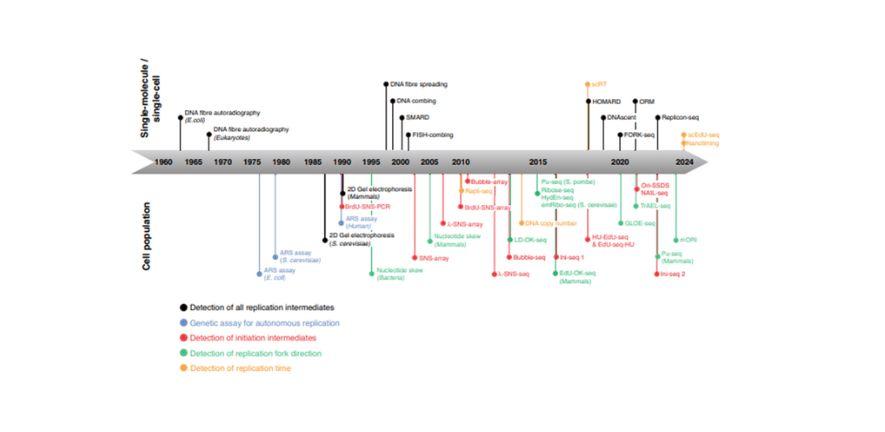
Submitted by Abigail Youngman on Thu, 06/02/2025 - 18:32
A study published in the journal Genes and Development by Torsten Krude with co-authors Olivier Hyrien and Guillaume Guilbaud, sheds new light on the controversial field of mammalian DNA replication origins. These initiation sites for genomic DNA replication have been historically difficult to identify and their determinants are still unresolved.
The study reviewed a wide array of techniques developed over recent decades that have succeeded in mapping the locations of DNA replication initiation, as well as the factors that may specify these sites for replication initiation.
They also addressed the controversy that has emerged from these disparate techniques over whether DNA replication origins are narrowly defined and localised to specific sites, or whether they are more dispersed and organised into broad zones. Ample evidence in favour of both scenarios currently creates an impression of unresolved confusion in the field.
Through attempting to reconcile discrepant findings and to synthesise unifying models, Dr Krude and his colleagues found that that the combination of several experimental approaches is instrumental to understanding initiation sites in mammalian genomes and they suggest several models to explain the current findings.
The paper represents an important milestone on the road to successfully capturing the complexities of replication initiation in vertebrate genomes.
Read the paper:
Hyrien O, Guilbaud G, Krude T. The double life of mammalian DNA replication origins. Genes Dev. 2025 Feb 4. doi: 10.1101/gad.352227.124. Epub ahead of print. PMID: 39904559.
The image represents a timeline for the recent development of methods to map DNA replication events in eukaryotic cells (Fig. 1 of Hyrien et al, 2025).
